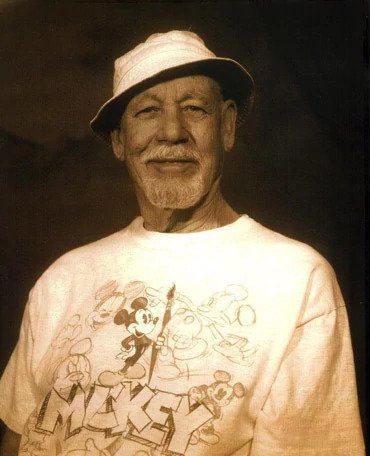Walt Stanchfield & Performing with No Audience
Switching from a performance art to a creating medium has been weird.
As a musician and teacher, the feedback loop was pretty tight. Performing on stage and playing in groups, there's a real magic to having other people in the room responding and reacting in real time and real space.
Even with teaching! Going into a lesson, students would improve noticeably on the spot, or laugh at my bad dad jokes right then and there.
Now I work in software. Don't get me wrong, I get great feedback! Though, it's a difference between publishing and performing.
Creatively instead of playing on stage, I write songs, draw on the couch, and largely play for a digital audience. Much of my creative work is published, not performed.
So I've been thinking about that a lot.
Walt Stanchfield
The late Walt Stanchfield, former Disney animator and teacher, knows what I'm talking about. The guy, on top of being a highly expressive teacher and artist, played concert piano, wrote poems, and was an enthusiastic tennis player.
Here he is talking about animation, though it's easy to see how he could be talking about any digital creative work:
Animation has a unique requirement in that its rewards are vaguely rewarding and at the same time frustrating. We are performers but our audience is hidden from us. We are actors but there is no applause. We are artists but our works are not framed and hung on walls for friends to see. We are sensitive people whose sensibility is judged across the world in dingy theaters by a sometimes popcorn eating audience. Yet we are called upon day by day to delve deep into our psyche and come up with fresh creative bits of entertaining fare. That requires a special kind of discipline and devotion, and enthusiasm. Our inner dialogue must be amply peppered with encouraging argument. We sometimes have to invent or create an audience in our minds to draw for.
Walt knows the curious position because he's been on both sides of this. Here he is talking about performing for a live audience:
I used to sing in operettas, concerts, etc., so I know what real applause is. It is heavenly. A living audience draws something extra out of the performer. A stage director once said to the cast of a play on the opening night, “You’ve had good equipment to work with: a theatre with everything it takes to put on a show. But you have been handicapped—one essential thing has been denied you. Tonight there’s an audience out there; now you have everything you need.”
So is there a solution to dealing with that missing piece? Is it just comparing apples and oranges? Walt recommends drumming up the empathy and imagination yourself, ultimately.
Well, we do have an awaiting audience out there. We’ll be denied the applause but at least there is a potential audience to perform for; one to keep in mind constantly as we day by day shape up our year dress rehearsal. Even as we struggle with the myriad difficulties of finalizing a picture—what is the phrase, “getting it in the can,” we can perform each act for that invisible or mystical audience. We can’t see our audience but it is real and it is something to work for.
So yes, a little bit of imagination.
He mentions it earlier, but devotion and enthusiasm has been the real key for me. I don't think I'd say I necessarily played music for the applause. The practice itself is what's energizing. I'm grateful that all of my disciplines have pretty great feedback loops. They're so physical, tactil, and expressive that the work is reward enough.
Sharing is really just a nice bonus, an artifact of the time well spent chasing a creative thread.
The whole essay is "A Bit of Introspection" from Gesture Drawing For Animation by Walt Stanchfield, handout made freely available, and published into a couple of nice books as well.
